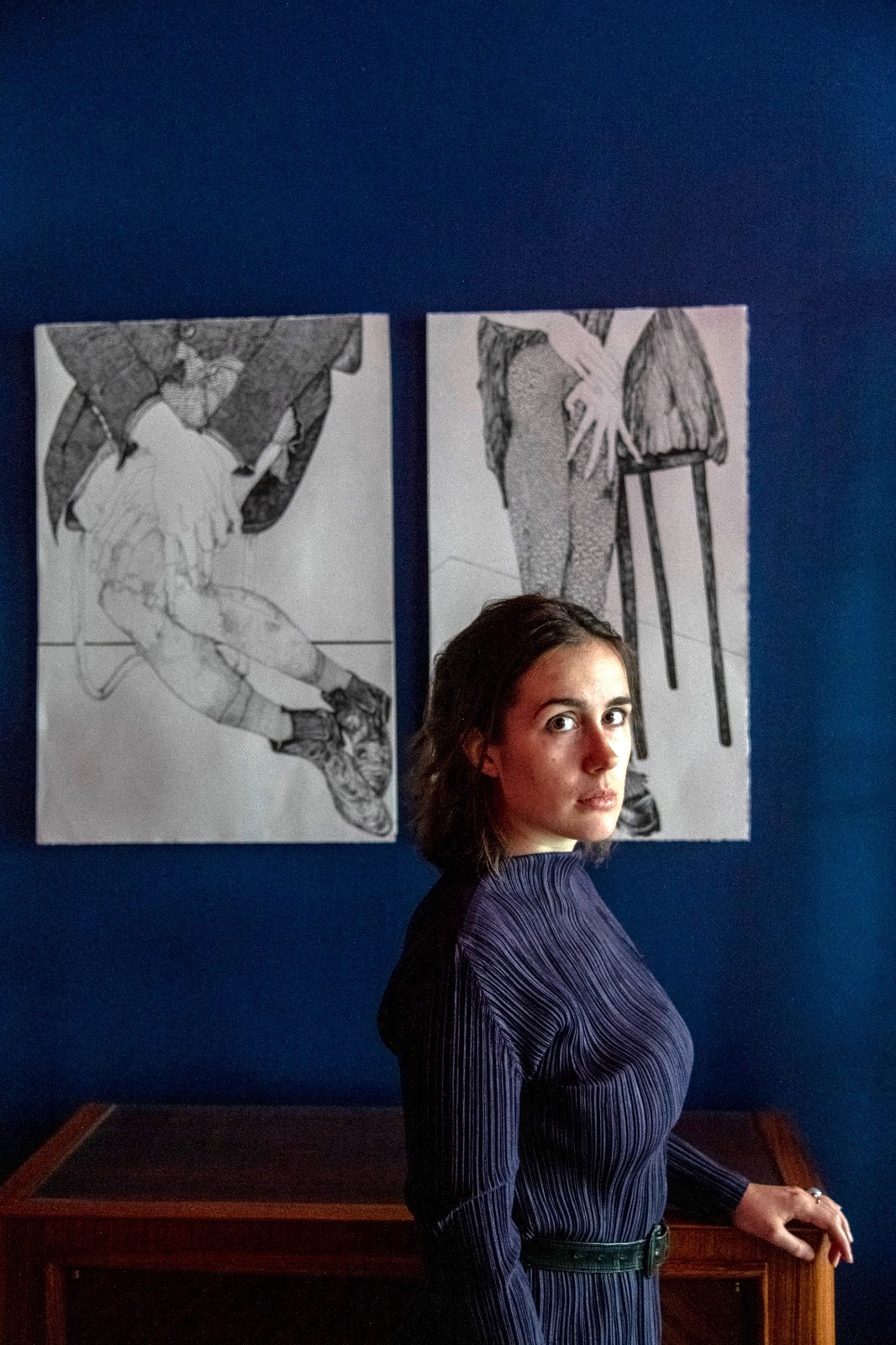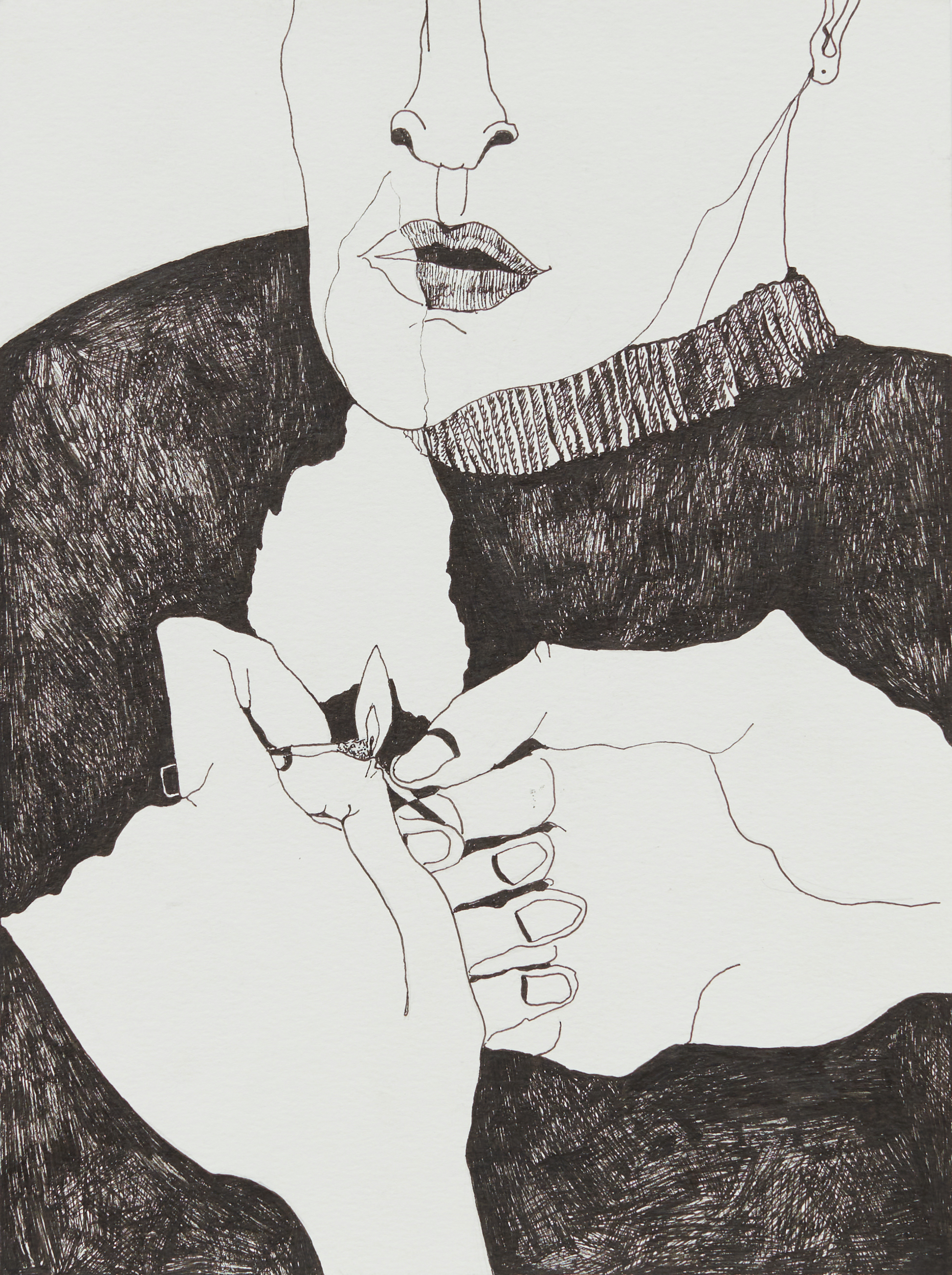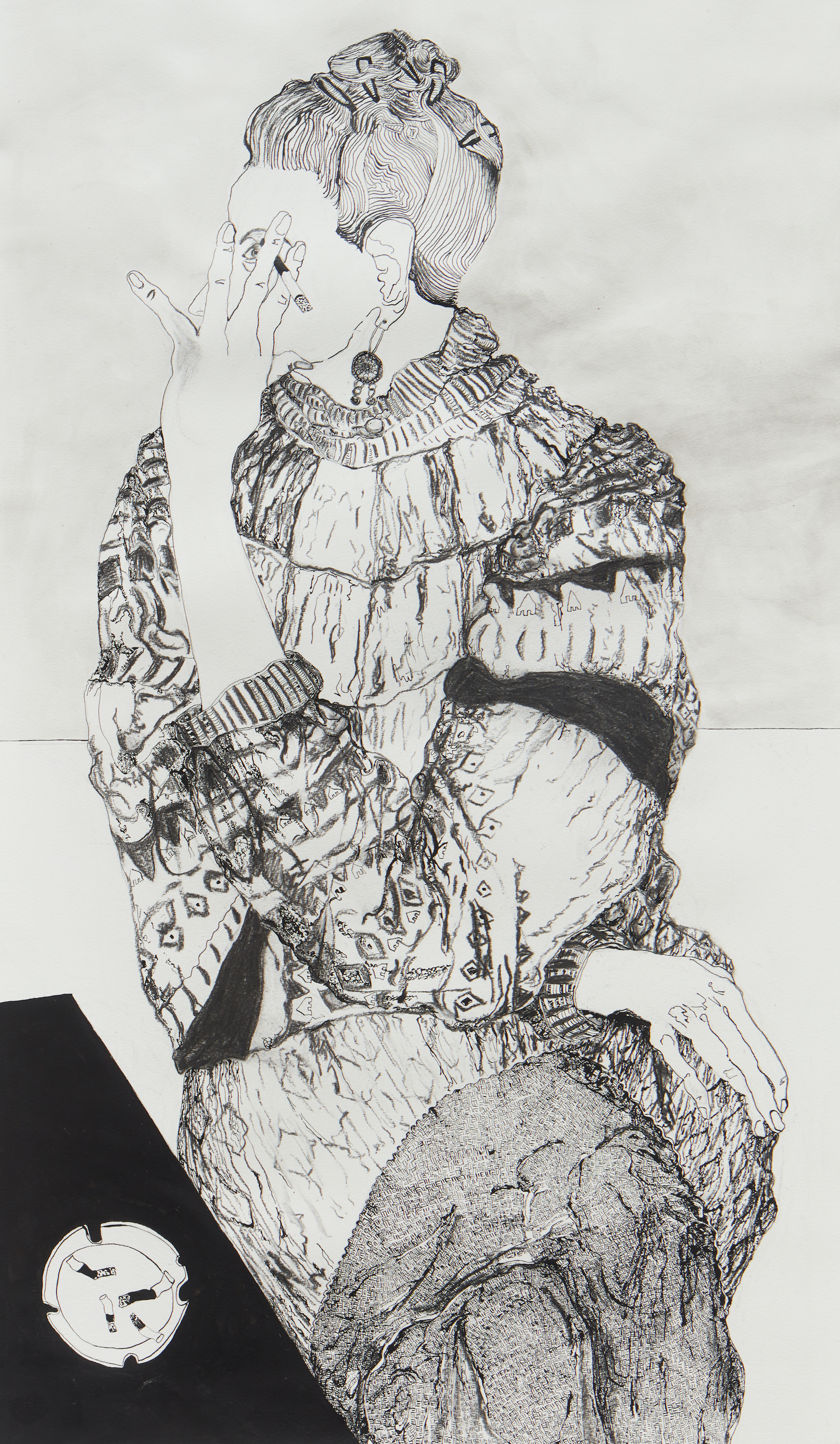Anastasia Lopoukhine
Can you describe your work in three words?
Enchanting. Distinctive. Charismatic.
What got you into the arts?
I cannot remember a time when I wasn’t drawing. I spent my early childhood on the 12th floor of a 1950s skyscraper. Everything a person could possibly need was inside that building: shops, a cinema, a hairdresser, and even art classes run by a neighborly artist. To entertain my art teacher, I began each class by fooling around, covering my face in blue or red paint. Even then, I would always use the smallest and thinnest tool to draw or paint with. I felt very adult going up and down in the elevator all by myself to attend art classes and visit the ancient dames who guarded our foyer. These lavender-scented ladies wore three pairs of glasses on their noses because they could not afford the proper prescription. Back from art class and my tri-spectacled friends, my favorite occupation was to look out of my window and invent stories about every car driver, passenger, and pedestrian I could spot from the great height of our flat. This bird’s eye view of the world around me was so curious and all of the adventures I had downstairs so amusing that I felt it was imperative to record them. I still do.
What drew you to drawing specifically and what is your process?
Drawing with a pen on paper to the exclusion of other mediums began as a matter of practicality. As a child of divorced parents who lived in separate countries and sent me to a school in a third, I lived much of my early life in a suitcase. I didn’t want to have an excuse not to make art just because I didn’t have the right paints or space to sculpt. Drawing offered an answer. All I needed was a piece of paper and a pen, and I was away! I start each drawing by inventing a story. Long or short, I must have a narrative. Then I begin to draw the image and consider what textures and patterns I will use for each section. Once I feel that my composition has a compelling flow I switch on an audiobook or podcast and try not to interfere with the instinctive movements of my hand. I know the drawing is working when I lose track of all time.
Where are you from and how does that affect your work?
I am half French and half Russian and I live in New York City. I was educated in the UK and the US. Geography affects my work because different places generate different narratives that drive my process. If ever I get stuck while creating a piece, I go for a walk and wait for the crowded street to give me the answer. I love living in New York City because of its diversity, I feel as though I am living in many different countries all at once.
What are your main sources of inspiration?
Once long ago, I asked a taxi driver to tell me the worst thing about his job. I expected him to complain about the long hours or mechanical problems. Waiting to stop at a red light before answering, he said, ’The worst thing about my job is that I never hear the end of the story. People get into my taxi halfway through their conversation and leave without finishing it off.’ I often think about that taxi driver and how it is the fragments of a story inspire me the most. I want my work to feel open-ended, like a snapshot of a much bigger tale, a springboard for one’s imagination to go on an unexpected ride.
What do you hope to convey through your art?
I hope to convey how universally bizarre the world really is. I think that humour is also a very important part of my practice. I think that if people are laughing they are much more likely to go down a visual journey that would make the viewer see the world through my eyes.
What artists have inspired you most?
A wide range of visual artists have inspired me. I first discovered the power of art as a child upon seeing some self-portrait prints by Rembrandt. Caravaggio is of equal importance to me as the more I find out about him the more I can see how much of his troubled personal life can seep into and thereby revolutionize biblical compositions. I think one of the difficult things for an artist is to find and project one’s voice and style. In this context, I highly admire Tracey Emin for her bravery and openness in painting what is the most raw about being a woman. The American artist Sanya Kantarovsky and the British artist Alexis Saul Grey are also important references for me because of the way they depict nostalgia. I also look to other art forms for inspiration. A growing interest in architecture has helped greatly when building my compositions. Lately, I have been reading about Frank Lloyd Wright, particularly regarding the design of the Guggenheim Museum in New York City and how its spiral guides people to move in a specific way. I have also learned a lot about the measured use of humour from the social commentator Fran Leibowitz and her sharp and shrewd one-liners. It seems to me that audiences are prepared to accept harsher truths if they are served up with laughter upfront.
What interested you about Canopy Collections?
Canopy Collections is as focused on the artist as it is on placing the art in collections. It pleases me that it is a woman-run art business. From the first instance, the company seemed like an environment where I could flourish. Discovering that some of the artists I follow and admire on Instagram were already part of Canopy’s roster has added to the sense that it was a place I could belong.
Do you collect other people's art? How important is it for you to live with?
I often acquire work from other artists as gifts or trades. I prefer living with works in a medium far from my own like large-scale photography or sculpture. These pieces help expand my visual landscape while not directly competing with my style. Although when I go to museums or galleries I gravitate toward black and white artwork, I don’t think I would ever consider accommodating more monochrome pieces in my home. I think living with artwork certainly, improves one’s quality of life by stimulating the imagination and bringing vitality into the home. Art creates an atmosphere and light, and a sense of new horizons like only the best kind of conversation can. I often hide Easter Eggs in my compositions, hoping that whoever ends up living with them will feel that there is always something new to discover.
Are any projects in the pipeline?
I draw every day, so the pipeline is always busy. Several shows and publications are beginning to take shape in New York and Paris. Lately, the most interesting development in my practice is the creation of video works that add an altogether new dimension and aesthetic. I doubt that I will ever put video at the center of my practice, but I consider it a great tool to enrich the drawings. Last year I made a video to accompany an octet of large charcoal drawings works that are meant to be projected vertically between the hung pieces. Another video in progress is a meditation on the phenomena of inspiration and geography. It is based on an extraordinary road trip I made across the beautiful yet dark South Caucasus.



